Zero Waste Pattern Cutting explained
What is Zero Waste Pattern Cutting?
With Zero Waste pattern cutting, the aim is to eliminate 100% of the waste fabric during the construction process. Think of the pattern pieces as a jigsaw puzzle all fitting together to fill the full width of the fabric.
Within the fashion industry, up to 15% of fabric is wasted during the cutting phase because of the way the garments are designed.
This hasn’t always been the case. Fabric used to be very precious and clothes were not only made to last, but the design of garments meant that there was very little waste.
Zero Waste pattern cutting is not a completely new concept, but more a forgotten one.
Which brings up the question – When did we become so wasteful?
- The industrial revolution saw the increase in cotton spinning through machinery.
- Although synthetic fabrics such as artificial silk, rayon and PVC can be dated back to the 1800’s, it was rarely used. The 1930’s saw the invention of nylon, followed by spandex and polyester.
- The production of these oil based fibres has increased enormously with approximately 46 million tonnes of synthetic fibres compared to 26 million tonnes of natural fibres produced in 2010.
- The invention (1790) then mass production (1850’s) of the sewing machine saw a rise in clothes production.
- Because of all the above mentioned factors, fabric has become ‘cheap’ and therefore we are less concerned about fabric wastage.
- Because of the cheapening of fabrics and fashion, our relationship with clothes has changed and we see them much more as throw-away items with little worth or value.
- The fast fashion industry has become an enormous contributing factor to climate change, damaging eco systems and habitats.
Thankfully there are people out there such as designers, makers, researchers, scientists and educators, who are using new technologies and creative design processes to change this wasteful approach.
This is great news for the planet, the fashion industry and for home sewing enthusiasts out there who are looking for less wasteful patterns to follow.
I am going to share with you everything I have discovered so far on my journey exploring this zero waste design process.
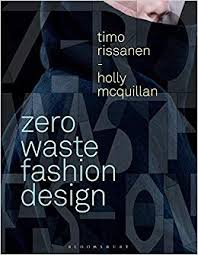
Zero Waste Fashion Design by Timo Rissanen, Holly McQuillan
This is the book that inspired me completely. I discovered it at the bookshop at the V&A when I was visiting one of their many amazing fashion exhibitions
It is very informative and explains what Zero Wasted Fashion Design is all about and how it can be achieved. I highly recommend getting a copy of this book. You can find the link here
Zero Waste Design Online

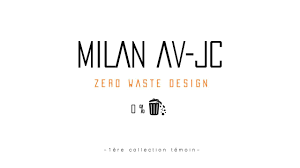
Milan AV-JC
Milan AV-JC have a detailed and informative page about Zero Waste Design at this link here
Find the patterns here
The patterns are very easy to understand and they have youtube tutorials for each pattern too which explains in detail how to construct the garments
Elbe Textiles
Elbe Textiles have a really fabulous sewing pattern called the Maynard dress which I have tried and really love. I have made it in a light jersey fabric and in a heavier weight gaberdine. Both work really well.
You can find the Maynard Dress Pattern here
You can also find a free blog tutorial for a kimono style gown/jacket here
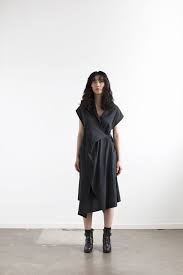
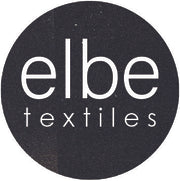

EWST Fashion Lab
EWST Fashionlab is a Fashion Design Training Workshop offering online classes and private courses
EWST Fashion Lab have several zero waste clothing patterns which you can find here
I tried the Kimono Cape Free patterns about 3 years ago which I found really inspired me to try out more patterns. At the time it was one of very few patterns available, which I searched high and low for but now there are so many more available and I am looking forward to trying out some more of the EWST Fashion Lab Patterns.
Liz Hayward
Liz Hayward trained as a clothing pattern-maker in Australia and has worked in the fashion industry for twenty years. Liz has a great book about zero waste sewing and writes a blog which shares her processes and designs driven by her passion for zero waste pattern cutting. She has some great project from clothes, pants, scrubs and dolls. All zero waste patterns. Her monthly newsletter is a welcome email in my inbox which I am always eager to read.
The blog is called The Craft of Clothes which you can find here
And there is also a great book available called Zero Waste Sewing and it has 16 projects to try. I love the process of following these patterns as they are hand drawn diagrams from the book. It is a different way of following a pattern for dressmaking which is an insightful process.
You can find a link to the book here
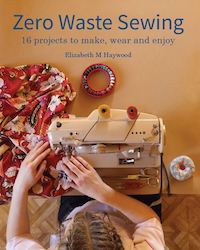
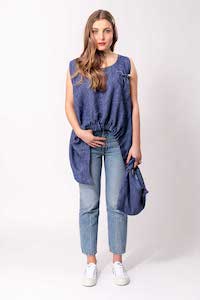
Schnittchen Patterns
Schnittchen Patterns have a couple of free Zero Waste Sewing Patterns which can be found here.
The Offset Warehouse
Offset Warehouse source the globe to bring together hand-picked eco fabrics and haberdashery, ideal for creating products that not only look good, but do the planet good, are kind to the workers who have produced the raw materials – and don’t harm your loved ones with dangerous chemicals and pesticides.
The Offset Warehouse have a free pattern download for a Zero Waste Dress. It’s a lovely simple pattern to try and I would recommend making it in a lightweight drapey fabric to get a more flattering look.
Find the Pattern here
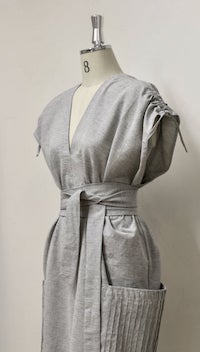


Goldfinch Limited
The Goldfinch Limited Sustainable Fashion Studio have a minimal waste overalls sewing pattern which can be found here
And a Zero Waste Tunic and Cropped Top Digital Sewing Pattern which can be found here
I know that there will be so much more out there in the world of Zero Waste Pattern Cutting and I would love it if you would share what you have found too.
I hope that you find all of the information above as exciting and inspiring as I do.
Thank you for reading.
